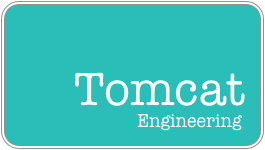#27: Capture requirements in a structured way
I use the term “requirements” to mean criteria against which a product or project will be judged a success or failure. If you can capture all the customer’s requirements before you start then the project is much more likely to succeed.
Often there are a few obvious requirements, but once you start digging you find lots more. It is clearly better to know about those rather than have the customer say at the end “but of course it has to be blue”.
For years I have used this list of headings to ensure that my questions cover all the possible aspects. Apparently it originates in a book called “Engineering Design – A Systematic Approach”:
Geometry: Size, height, breadth, length, space requirement, number, arrangement, connection, extension
Kinematics: Type of motion, direction of motion, velocity, acceleration
Forces: Direction of forces, magnitude of forces, frequency, weight, load, deformation, stiffness, elasticity, inertia forces, resonance
Energy: Output, efficiency, loss, friction, ventilation, state, pressure, temperature, heating, cooling, supply, storage, capacity, conversion
Material: Flow and transport of materials, physical and chemical properties of the initial and final product, auxiliary materials, prescribed materials, compliance with standards
Signals: Inputs, outputs, form, display, control equipment
Safety: Direct protection systems, operational and environmental safety, legal requirements
Ergonomics and HMI: Human-machine interface, type of operation, operating height, clearness of layout, sitting comfort, lighting, shape compatibility
Production: Factory limitations, maximum possible dimensions, preferred production methods, means of production, achievable quality and tolerances, wastage
Quality Control: Possibilities of testing and measuring, application of special regulations and standards
Assembly: Limitations due to lifting gear, clearance, means of transport (dimensions and weight), nature and conditions of dispatch
Operation: Noise, wear, special uses, marketing area, destination (for example salty or tropical conditions)
Maintenance: Servicing intervals (if any), inspection, exchange and repair, painting, cleaning
Costs: Maximum permissible manufacturing costs, cost of tools, investment and depreciation
Schedules: End date of development, product planning and control, delivery date
Tags: design process
Previous: Define the problem in one sentence
